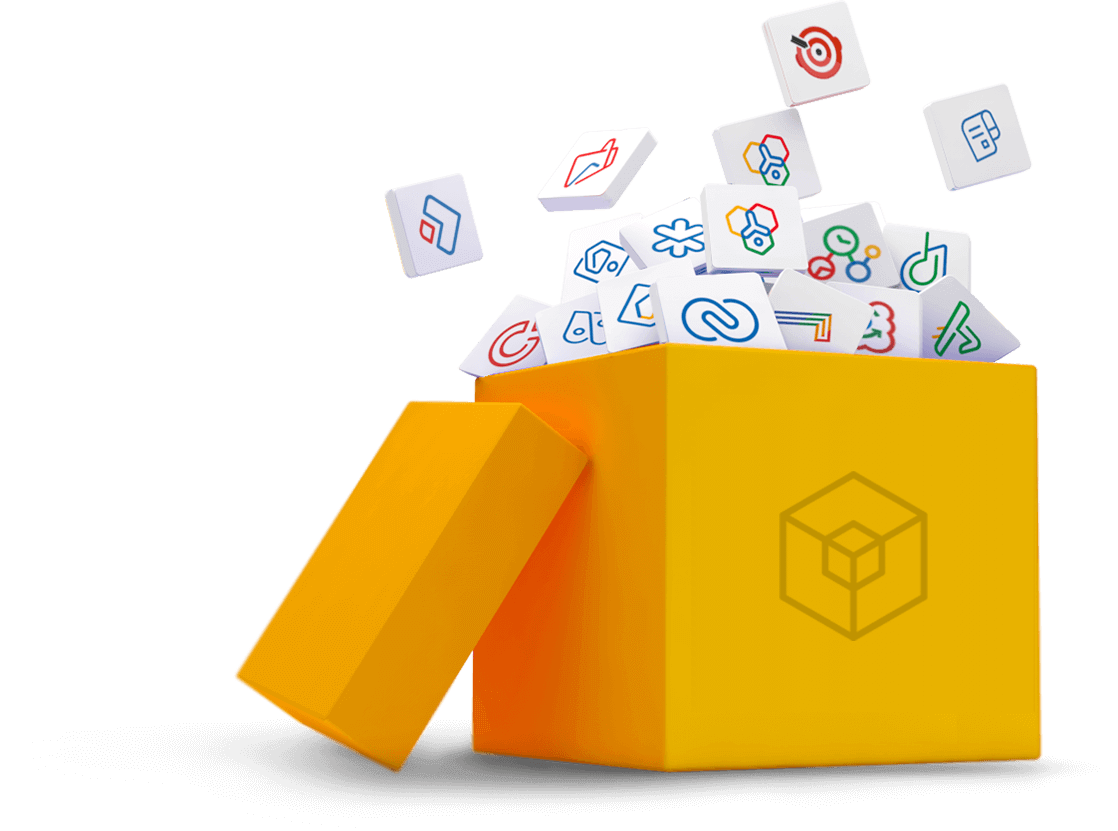- Understand your requirements
- Choose the right project tracking tool
- Break projects into manageable tasks
- Time tracking for better productivity
- Set clear deadlines and milestones
- Keep all communication in one place
- Regularly review your projects
- Automate wherever possible
- Track freelance projects with Zoho Tables
Understand your requirements
Before setting up a process to track freelance projects, take a step back and evaluate your workload. A clear understanding of your workload will help you create an effective structure and ensure smooth operation and better management.
Here are some questions you can ask yourself to evaluate your work:
How many clients am I working with?
How many active projects do I have?
What are the expectations of my clients?
What is the complexity of the projects I handle?
Do my projects involve recurring tasks?
What are my collaboration needs (if you work with designers, writers, subcontractors, etc.)?
Do I have a process to track payments?
What is my preferred working style?
Choose the right project tracking tool
For freelancers, picking the right project management tool is crucial for staying organized. The ideal tool should allow you to organize tasks, set deadlines, and monitor progress in one place. In addition to these basic capabilities, it should also let you collaborate with your clients efficiently and automate workflows.
Here are some tools that are popular and offer comprehensive project management solutions:
With the ease of a spreadsheet and the power of a database, Zoho Tables offers you the best of both worlds. It allows you to create custom solutions for each project, track progress, manage tasks, and collaborate with your clients. While it's still new to the market and doesn’t have extensive out-of-the-box integrations yet, Zoho Tables is ideal for freelancers since it perfectly incorporates the workflows of small teams and individual users.
Using boards, lists, and cards, Trello organizes tasks visually. It’s simple, intuitive, and ideal for tracking progress. It’s a suitable tool for freelancers looking for a broad visual overview of workflows. When it comes to handling diverse client projects or integrating time tracking and invoicing, though, Trello’s features might be too basic.

Detailed task management is Asana’s main capability. The tool comes with timelines, task dependencies, and priority settings. However, for freelancers, the feature set in Asana may be overwhelming for small-scale projects. Additionally, some advanced features are only available in paid plans, and the cost may not be justified for individuals.
ClickUp provides customizable workflows, time tracking, and document storage in one place. Although it’s versatile, its interface and plethora of features can feel intimidating to freelancers who are looking for an easy-to-use, straightforward tool.
Airtable allows users to create custom project tracking solutions, track progress, and collaborate. Airtable used to be the go-to tool for project management, but it has now moved into the app-building space. Freelancers with minimal project management requirements have been left behind with no support or relevant features.
Specifically designed for freelancers, Moxie offers customizable workflows, task management, and client collaboration features. However, the subscription pricing may be a drawback—especially for those who are just starting out on a tight budget. While its focus on freelancer needs is commendable, the cost often outweighs the benefits.
Zoho Projects excels at managing tasks, tracking time, and enabling collaboration with multiple stakeholders. While powerful, its focus on team-based workflows and complex project management capabilities may not be necessary for solo freelancers managing simpler, independent projects.
Break projects into manageable tasks
Once you have a project management tool, you can start by breaking your projects into bite-sized tasks that you can check off your list. This makes them more approachable and easier to complete.
For example, if you’re working on a content writing project, your tasks would include researching the topic, drawing a content outline, writing the first draft, reviewing and rewriting based on feedback, collaborating with designers for creatives, and planning distribution.
These smaller tasks allow you to focus on one thing at a time and ensure you’re making progress towards the larger goal.
Time tracking for better productivity
Time tracking is crucial for both billing and productivity. It makes sure that you’re accurately charging your clients and staying productive during the hours you work—and it's as simple as starting a timer when you begin a task and stopping it when you’re done.
There are many tools that provide this capability, like Zoho Projects, Toggl, and ClickUp. Afterwards, you can analyze how much time you’ve spent on each task or project to identify areas for improvement and allocate time better.
Set clear deadlines and milestones
One of the critical aspects of freelance projects is meeting client deadlines; without a structured timeline, it’s easy to lose track of important deliverables. But, by using your project management tool, you can set clear deadlines for each task and create milestones to track your progress.
For example, if you’re working on a web design project, your milestones will probably look like this: initial concept approval, first draft submission, client feedback, revisions and rework, and final design delivery.
These milestones not only help you avoid last-minute rushes but also allow clients to see where you are in the process, keeping everyone on the same page.
Keep all communication in one place
Effective communication is essential for successful project management—be it with your client or other freelancers you collaborate with. Instead of using multiple tools to manage new projects, feedback, approvals, or even file storage, try keeping everything in one place. Many project management tools have options to track communication, files, and updates in the same space as your tasks. Centralizing your communication streamlines the process and makes it easier to refer back to conversations and avoid miscommunication.
Regularly review your projects
When there's no manager to review performance and provide feedback, self-evaluation becomes essential. Regularly reviewing your projects and task lists allows you to monitor progress, adjust priorities, and stay on track; and reflecting on the output of your previous projects before starting a new one can help identify areas of improvement. While there's always client feedback, self-assessment can offer an additional layer of insight, enabling you to achieve better results.
Automate wherever possible
As a freelancer, you don't have unlimited time and resources—and both are invaluable. The more repetitive, mundane tasks you can take off your plate, the more efficient you’ll be. Project management tools offer automation features like reminders, data manipulation, or status updates to reduce the time you spend on manual work.
For example, you can set up automatic emails to your clients once you reach a milestone or set reminders before deadlines. You can also integrate your project management tool with your favorite apps, making it easier to manage your projects.
Track freelance projects with Zoho Tables
If you’re looking for a simple, easy-to-use tool for your freelance project management, with no learning curve at all, Zoho Tables is a great place to get started. It offers an intuitive interface tailored to the needs of freelancers, and its ready-to-use templates offer guidance on how to organize your projects, streamline and automate workflows, collaborate with clients, and more without any setup hassle.

What if you had a solution that allowed you to focus solely on your actual…
TRY THIS FREE TEMPLATEWhether you’re handling one project or many, Zoho Tables makes it easy to stay organized and on top of your freelancing journey.
A final note…
Freelancing requires dedication and adaptability. While it offers unmatched freedom, the key to success lies in staying organized, prioritizing tasks, and constantly improving your processes. By using the right tool and embracing a growth mindset, you can overcome challenges and deliver your best. Always remember, consistency is your ally. While it's important to keep refining your approach and staying focused, it's equally important to celebrate your little wins and enjoy the journey.







